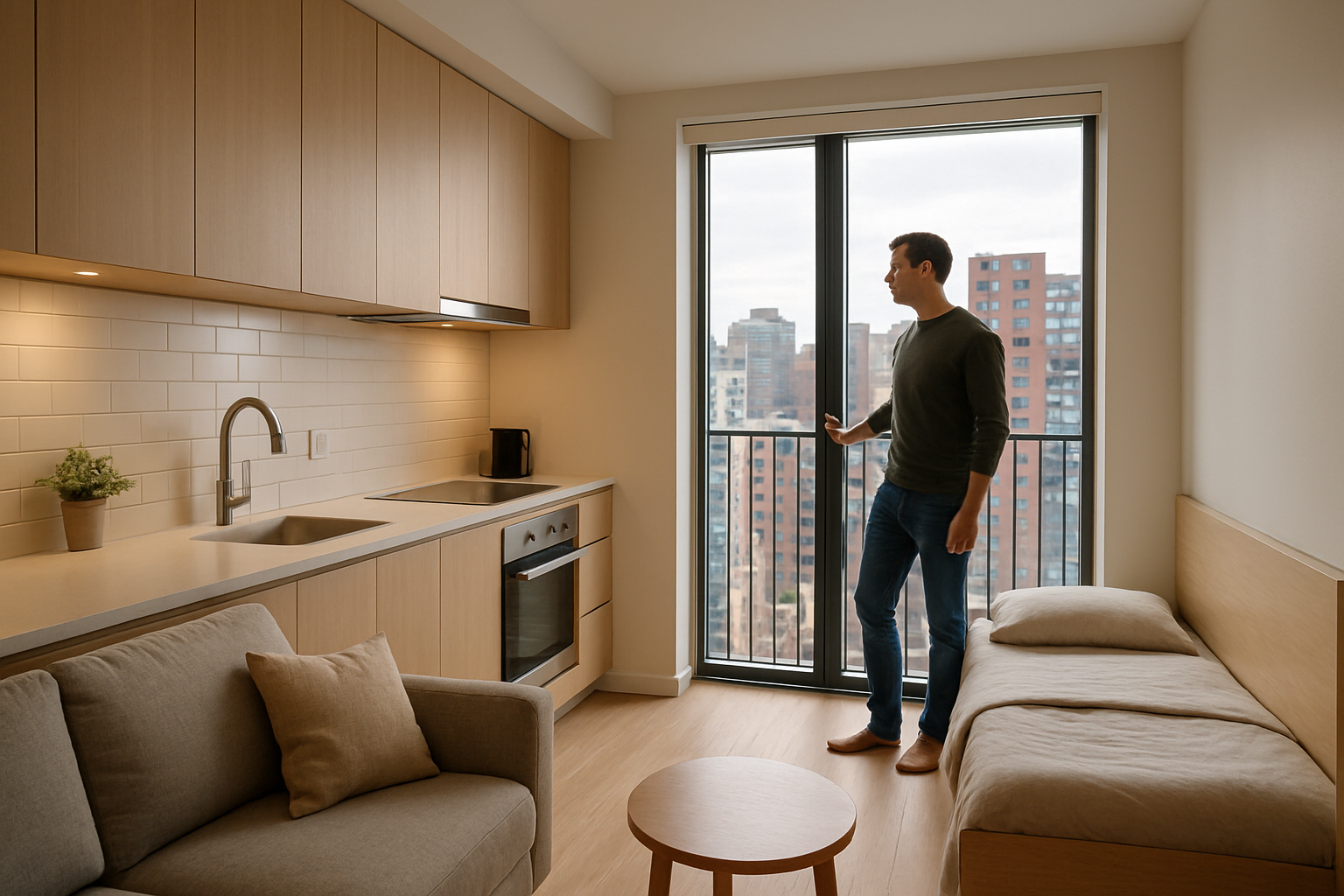Micro-Apartments: The Next Big Thing in Urban Real Estate
In the ever-evolving landscape of urban real estate, a new trend is gaining momentum: micro-apartments. These compact living spaces, typically ranging from 200 to 400 square feet, are reshaping the way city dwellers think about home. With urban populations swelling and housing costs soaring, micro-apartments offer a unique solution to the challenges of modern city living. This innovative approach to residential real estate is not just a passing fad but a reflection of changing lifestyles and economic realities in major metropolitan areas.

The concept isn’t entirely new – efficiency apartments have existed for decades. What sets modern micro-apartments apart is their thoughtful design, maximizing every square inch through innovative storage solutions, multifunctional furniture, and smart home technology. These units are not just smaller versions of traditional apartments but are purpose-built to offer a complete living experience in a minimal footprint.
Economic Drivers Behind the Trend
The surge in micro-apartment development is largely driven by economic factors. In many major cities, the cost of land and construction has reached astronomical levels, making traditional-sized apartments unaffordable for a significant portion of the population. Micro-units offer a more accessible entry point into desirable neighborhoods, allowing young professionals and students to live in prime locations without breaking the bank.
For investors and developers, micro-apartments represent an opportunity to maximize returns on investment. By fitting more units into a building, they can potentially generate higher overall rental income compared to fewer, larger apartments. This economic model has made micro-apartment projects increasingly attractive to real estate investors looking for innovative ways to capitalize on urban property markets.
Design Innovations in Micro-Living
The success of micro-apartments hinges on intelligent design. Architects and interior designers are pushing the boundaries of spatial efficiency, creating living spaces that feel surprisingly spacious despite their limited square footage. Common features include:
-
Murphy beds that fold into the wall
-
Convertible furniture that serves multiple purposes
-
Floor-to-ceiling storage solutions
-
Sliding partitions to create flexible living areas
-
High ceilings and large windows to create a sense of openness
These design elements, combined with cutting-edge home automation technology, transform micro-apartments from cramped quarters into sleek, modern living spaces that appeal to minimalist sensibilities and tech-savvy residents.
Target Demographics and Lifestyle Shifts
Micro-apartments cater primarily to young urban professionals, students, and single individuals who prioritize location over space. For many in this demographic, the ability to live in the heart of a vibrant city outweighs the need for a larger living area. The trend also aligns with broader shifts towards minimalism and experiences over possessions.
Moreover, as remote work becomes more prevalent, the traditional notion of home is evolving. Many young professionals no longer need dedicated home offices or large living spaces, preferring instead to work from cafes or co-working spaces. This shift in work culture makes micro-living not just acceptable but desirable for those seeking a more flexible, urban lifestyle.
Challenges and Criticisms
Despite their growing popularity, micro-apartments face several challenges. Critics argue that these units may lead to overcrowding and could potentially lower the quality of life for residents. There are concerns about the long-term livability of such small spaces and their impact on mental health.
Zoning laws and building codes in many cities are still catching up to the micro-apartment trend. Some municipalities have minimum size requirements for residential units, which can hinder the development of micro-apartments. Adapting these regulations to accommodate innovative housing solutions while ensuring safety and livability is an ongoing process in many urban areas.
The Future of Urban Housing
As cities continue to grapple with housing affordability and space constraints, micro-apartments are likely to play an increasingly significant role in urban real estate markets. The success of these compact dwellings could pave the way for more diverse and flexible housing options, challenging traditional notions of what constitutes a home.
Looking ahead, we can expect to see further innovations in micro-living. This might include more community-focused developments that offset limited private space with extensive shared amenities, or the integration of virtual reality technology to expand the perceived living space.
The micro-apartment trend represents more than just a new housing typology; it’s a reflection of broader societal shifts towards urban living, minimalism, and flexibility. As this segment of the real estate market matures, it will be fascinating to see how it shapes the future of our cities and redefines the concept of home for generations to come.





